Why the original Doom is still an incredible game 30 years later
Over the long Easter weekend, I found myself in the mood for the distinctive sort of action a first-person shooter provides. After a bit of trawling through Steam’s First-Person Shooter tag to see if there was anything new that caught my eye — and ultimately getting turned away by the number of multiplayer-centric titles — I turned to my substantial Switch games shelf and reached for my copy of Doom: The Classics Collection. “Right,” I thought. “I’m going to beat all of the original Doom.”
I love Doom. I played it a ton back in 1993 when it first came out — originally on a 386 that wasn’t quite up to the job, and subsequently on a 486 DX/2 66 that very much was — but for the most part only really played its shareware version, meaning that I know first episode Knee-Deep In the Dead a lot more than the subsequent The Shores of Hell and Inferno.
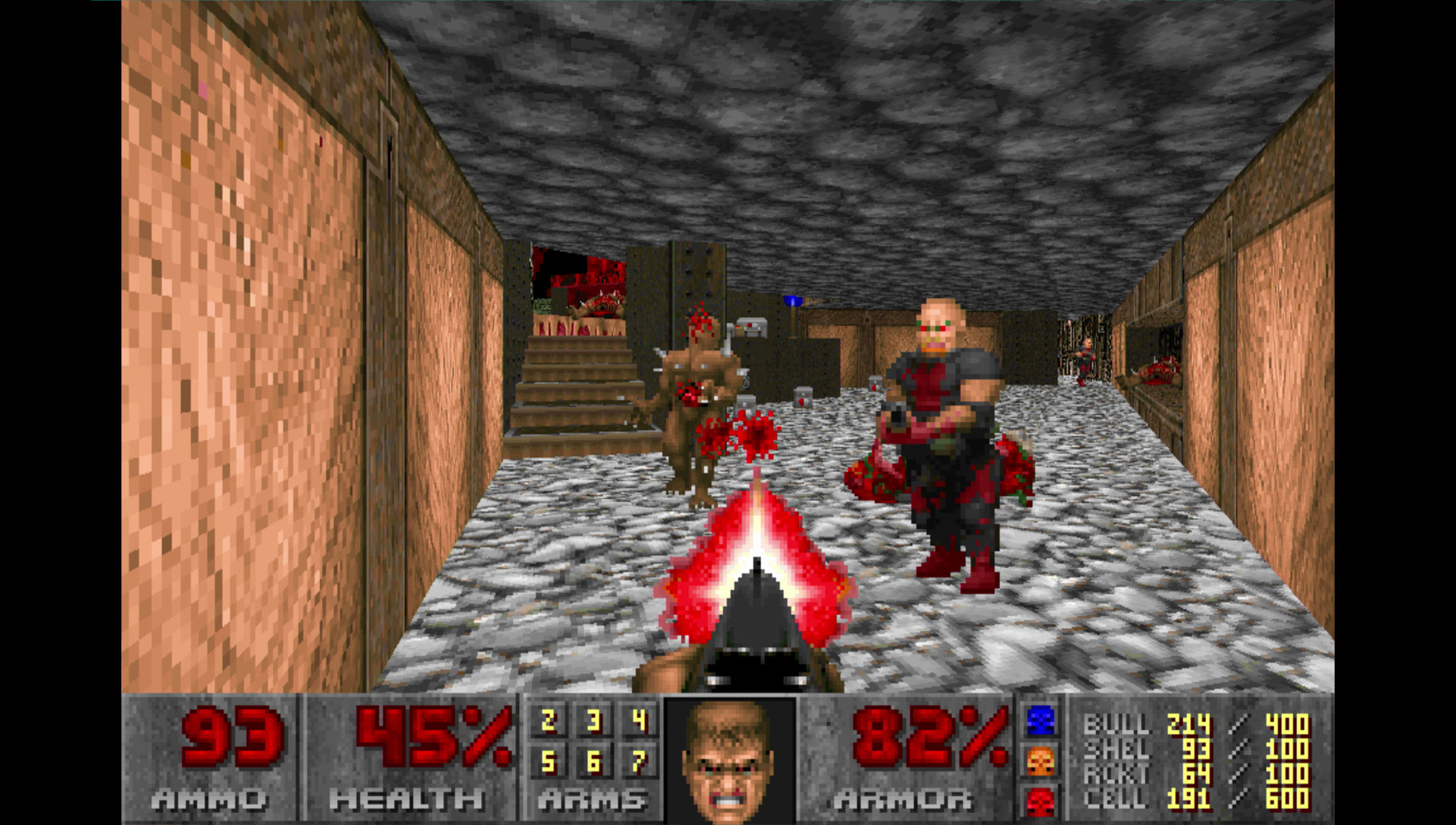
I did eventually get my hands on a copy of the registered version and play through both The Shores of Hell and Inferno, but never picked up The Ultimate Doom, meaning that fourth episode Thy Flesh Consumed, added in The Ultimate Doom, was something I never spent any time with back in the day. As such, I was curious to play through that — but also to revisit the earlier episodes.
What I found — or perhaps reminded myself — is that the original Doom is an absolute masterpiece of game design. It’s a legitimate work of art from a design and mechanical perspective, and a strong argument for how when we talk about “games as art” we shouldn’t just focus on the narrative or aesthetic side of things.
Doom’s story is stupid, after all, but it also doesn’t matter one jot to the experience as a whole. Instead, the beauty of Doom comes in how well the whole experience is designed, how well it incorporates lessons learned from other games, and how satisfying it still is to play, thirty years after its original release.
One thing that particularly struck me while I was playing is something that I had neither the experience or the awareness to appreciate back in the day, which is how many mechanical cues Doom takes from other games, many of which are in completely different genres. The mechanical tropes it makes use of became popular for a reason, after all, and it turns out that they transplant well from a 2D or 2.5D perspective to a first-person quasi-3D perspective.
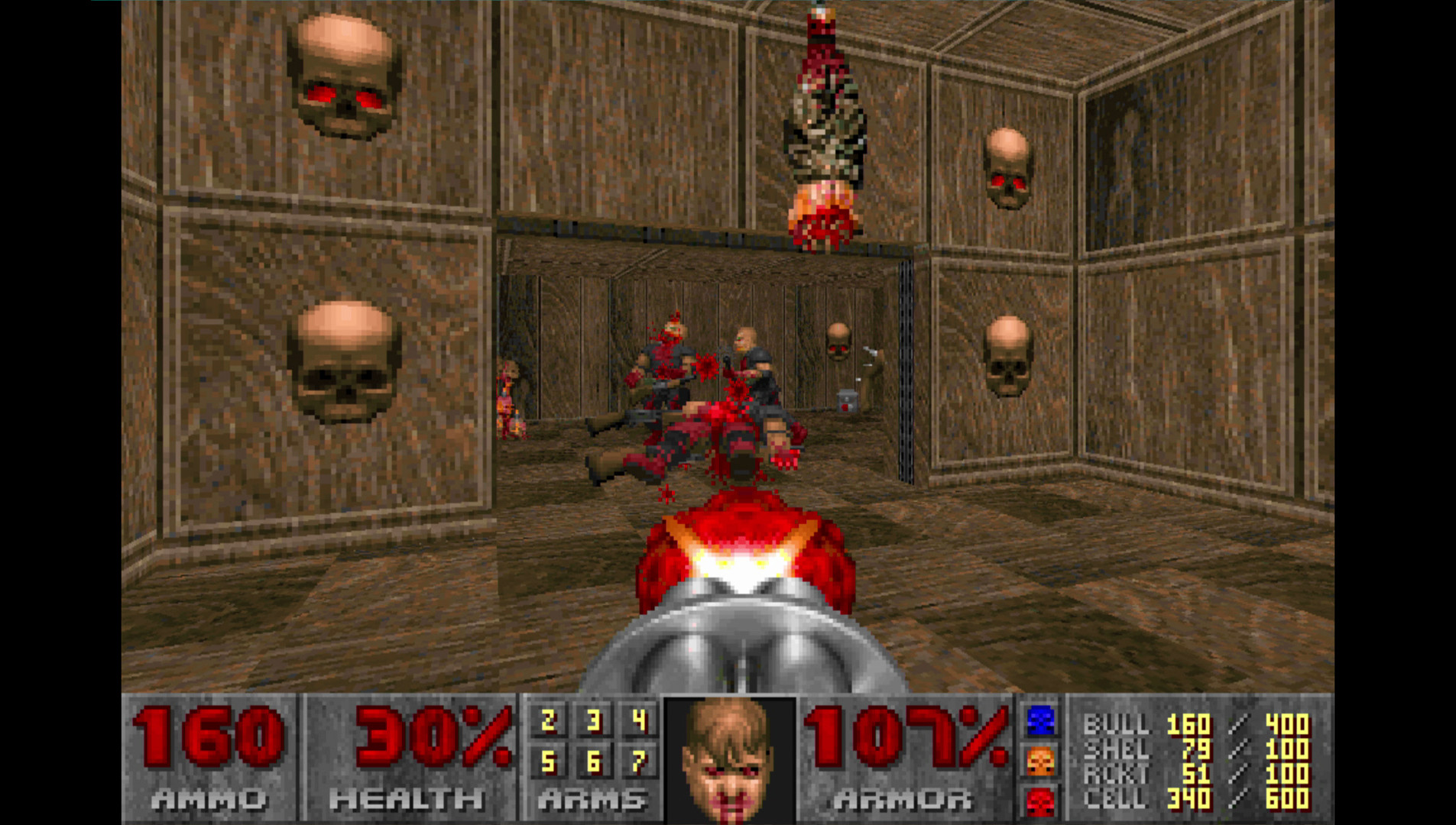
Let’s take the concept of hitstun as an example. This is a mechanic from real-time games whereby if you hit an enemy, they are momentarily stunned, preventing them from immediately hitting you back while you’re standing in melee range. The initial idea of hitstun was extended into the concept of combos, allowing you to stun an enemy with an initial hit, then follow up with a series of attacks that usually culminate with you knocking them to the floor.
This was first seen in classic Technos Japan beat ’em up Renegade, but is a critical part of both the beat ’em up and fighting game genre even today. It’s also seen in the character action genre, which is essentially a spinoff of the beat ’em up genre. But most importantly for our purposes today, it’s also seen in Doom.
Most enemies in Doom don’t go down in one hit, particularly if you’re using one of the weaker weapons. Yes, Former Humans and Imps can be taken down with a single shotgun blast — and even Pinky demons too if you’re lucky — but for the most part, you need to unload at least a few shots into an enemy to take them down, especially once you start running into foes like Cacodemons. It’d be a real pain if, while you were shooting these enemies multiple times, they were simply able to continue hurting you as if nothing was going on, particularly in the case of enemies who use hitscan attacks with no visible projectiles.
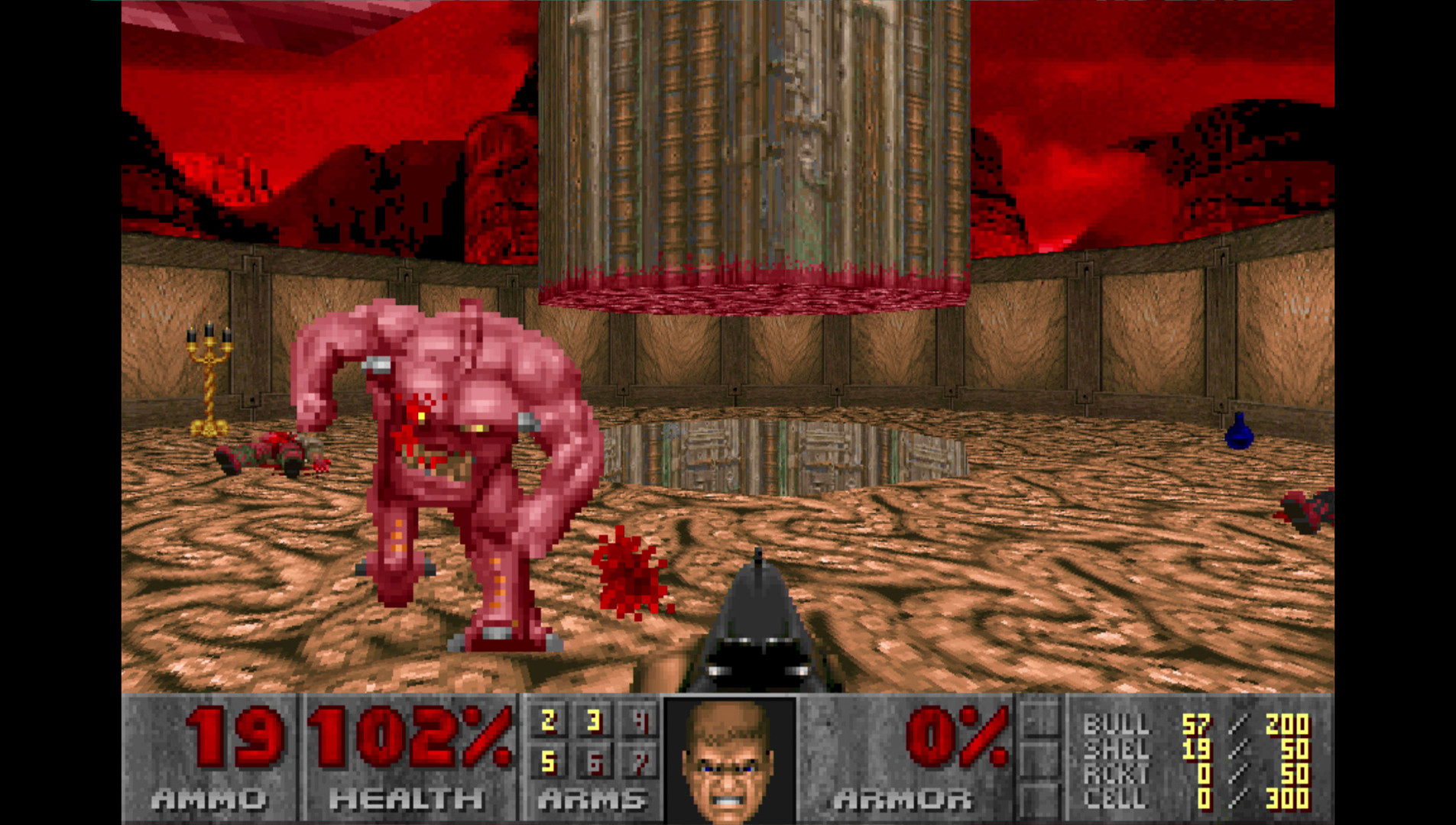
So Doom takes the hitstun approach. It’s perhaps not as drastic as in beat ’em ups and fighting games, but it’s definitely present. Hit an enemy with a weapon and they’ll often be thrown off for a brief moment, even to the extent of cancelling an attack if you time things properly. It’s not a sure-fire thing, so you’ll still need to be ready to dodge projectile attacks from enemies such as Imps, Cacodemons and Barons of Hell, but if you can keep the pressure on your foes, you’ll take at least a little pressure off yourself, and that can make all the difference.
Also coming to Doom from the beat ’em up genre is the importance of situational awareness and controlling space. In a beat ’em up, getting surrounded is generally a death sentence, and the same is very much true for Doom. The difference is that in a beat ’em up you can generally see what is going on all around you at all times, whereas in Doom you can only see directly in front of you. As such, you need to have situational awareness not only from what you can see, but also what you can hear — as well as the things you learn from experience.
Doom’s sound design is exemplary. While many of its stock sound effects are approaching Wilhelm Scream levels of ubiquity these days, they still remain hugely effective in context, because they’re not only atmospheric, but they also give you important information about what is going on. Doom is very fond of springing traps on you when you grab important items such as keys, and the sound design is absolutely critical to the player being given a fighting chance to survive these situations.
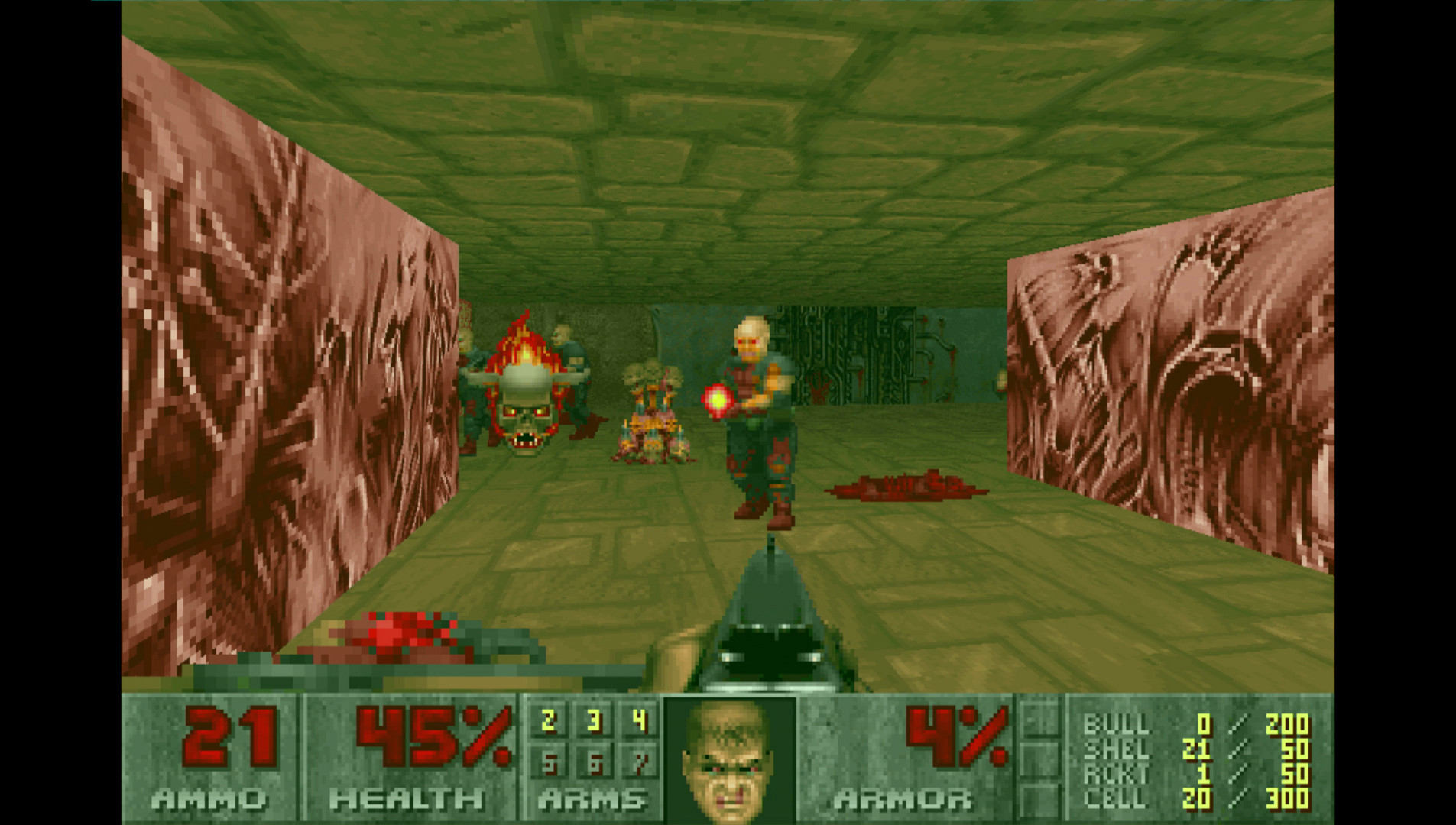
Not only can you often hear the ambient sound of monsters shut in a room before you can see them, but the distinctive sound of a door opening or a wall moving when you’re not necessarily expecting one of those things to happen makes it obvious that you need to look around and determine the source of that noise — fast. Once you do, it’s up to you to position yourself in such a way that you don’t get overwhelmed by the swarm of enemies that will inevitably follow — ensuring that you don’t get trapped in a corner, for example, and that you have room to back away while continuing to attack.
It’s not just about traps, either. When faced with a room full of enemies that are scattered around, it’s important to prioritise your targets and control the space effectively. Manipulating the enemies so that they’re clustered together makes them ripe for a rocket launcher or BFG shot. Taking out the weaker projectile-firing Imps allows you to focus on more dangerous threats. Alternatively, dealing with dangerous threats first allows you to mop up weaker foes afterwards. There’s no one set way to deal with encounters, but the one constant is that you need to be the one dominating the space.
Not only is this a concept critical to the beat ’em up genre, but it’s also an essential part of shoot ’em ups, too. Success in shoot ’em ups is dependent on you absolutely dominating the screen and never being in a position where you feel like the enemies and their shot patterns are completely controlling what you do.
The same is very much true for Doom also. Outside of the Former Human enemies, most enemies with ranged combat capabilities fire visible projectiles, meaning you can dodge them. And, as in a shoot ’em up, dodging isn’t just a matter of getting out of the way to avoid being hit — it’s also about making sure you end up in a tactically advantageous position.
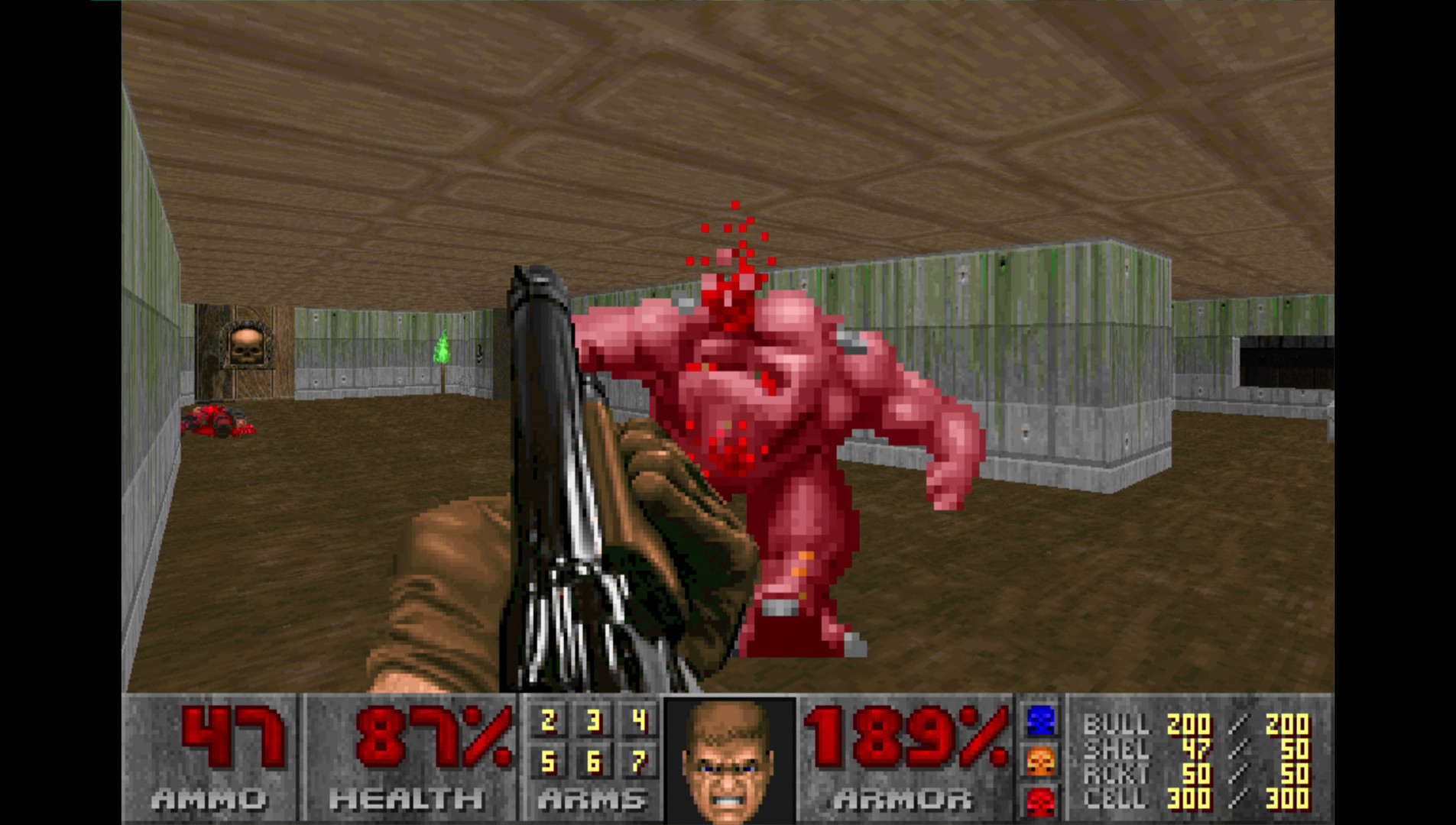
In a shoot ’em up, there’s no point dodging a shot in a way that pins you into a corner of the screen. Likewise, in Doom, there’s no point dodging a shot and getting stuck in a corner or, worse, falling off a platform into hazardous material. We’re back to the idea of situational awareness again; as in both shoot ’em ups and beat ’em ups, in Doom you need to be aware of the entire situation unfolding around you, not just the part in your immediate vicinity.
It’s pretty clear, then, that mechanically speaking, the folks at id Software very much knew their stuff about game design when they put Doom out. It’s evident that they were familiar with successful mechanical tropes and conventions when they designed how Doom would work in the player’s hands, and it’s testament to the timelessness of these tropes that Doom still plays so well today, whether you’re playing it with keyboard like in the old days, or a more modern twin-stick setup on a console.
But that’s not the only reason Doom shines. The other part of the equation is the excellent and varied level design — and this is often cited as one of the main differences between the single-player first-person shooters of today and those from back in the ’90s. While a lot of today’s first-person shooters place an emphasis on spectacle, effectively taking you through something of a theme park ride punctuated by shooting galleries, Doom’s levels are designed to provide lots of different experiences.
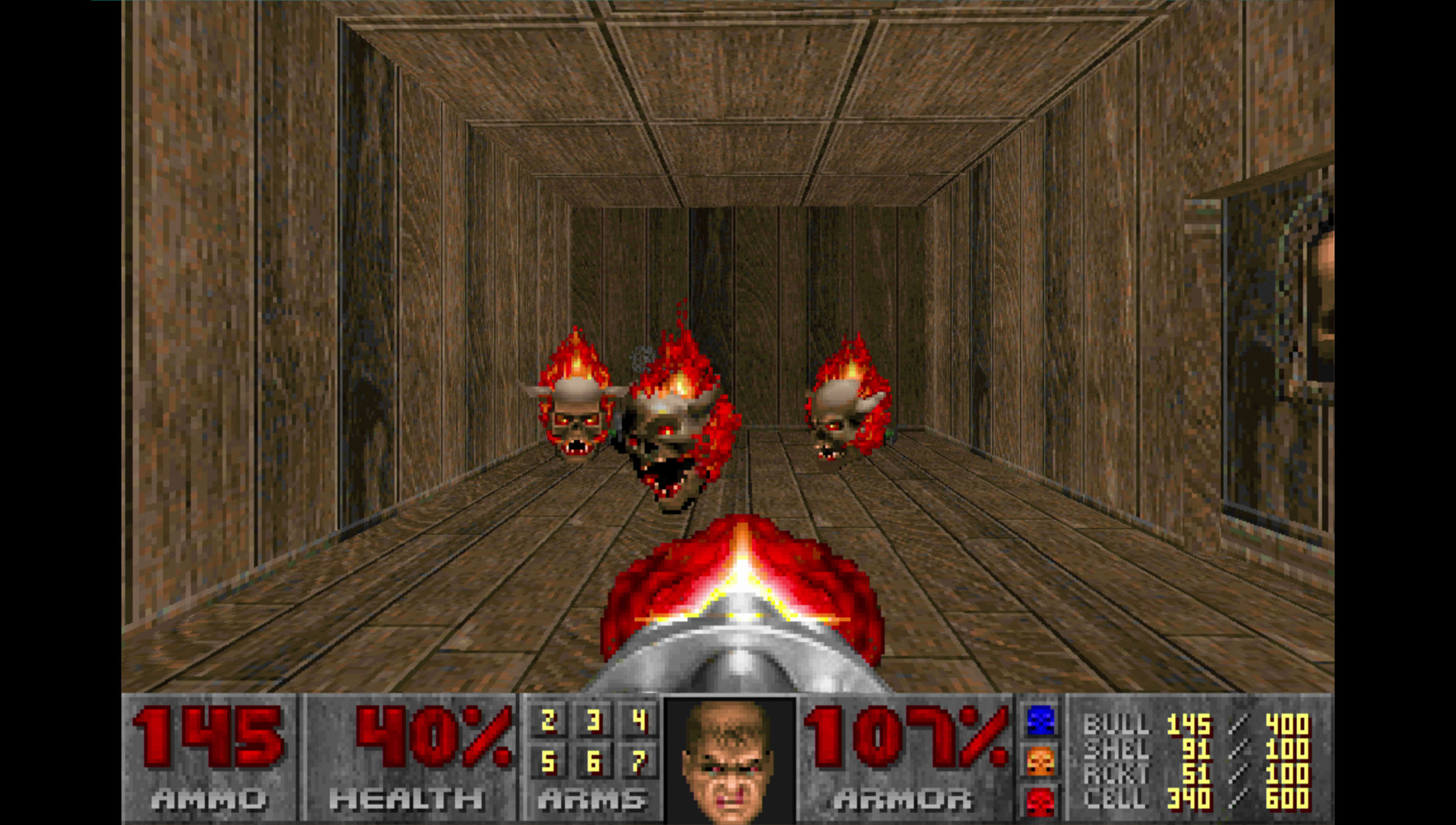
Sometimes you’ll be exploring non-linear series of corridors to find a suitable way onwards. Sometimes you’ll be dealing with large arenas full of enemies. Sometimes you’ll be making creative use of powerups to traverse dangerous terrain. And you’ll encounter levels both large and small on your journey, meaning you can never quite be sure what to expect if you’re a newcomer.
I found fourth episode Thy Flesh Consumed to be particularly effective in this regard. The first stage is absolutely monstrously difficult, for example, but it’s also extremely tiny, meaning that once you figure out the tactics you need to use in order to survive the difficult encounters, it can be cleared pretty quickly. Later stages play with the formula a great deal, making effective use of all sorts of interesting structural elements such as locked doors, teleporters, secret passages and the Doom engine’s ability to raise and lower floors, ceilings and walls to open and close access to various areas.
On previous attempts at Thy Flesh Consumed, I’d been put off by the difficulty of that first stage. But this time around, having come straight from a run through Knee-Deep in the Dead, The Shores of Hell and Inferno, I felt much better prepared to deal with the challenges it was presenting me with. It still took a few attempts, but once I made it through I feel like I had a whole new appreciation for what this game was doing.
And, indeed, as Thy Flesh Consumed continued, I found myself feeling like this later-added fourth episode was indeed some of the best Doom in Doom — even if its narrative context makes no sense whatsoever, even by Doom standards.
All in all, my conclusion was pretty simple: if it’s been a few years since you played the original Doom — or perhaps you’ve never played it if you’re a young ‘un — then I highly, highly recommend you take a bit of time to enjoy it today. It’s a game that holds up extraordinarily well even after 30 years — and a first-person shooter that I’d still gladly take in favour of a significant number of today’s offerings.
Doom is available now for Windows PC via Steam, Nintendo Switch, Xbox platforms and PlayStation platforms.
Header art by Kurashiki Nanka. Original source here.
Join The Discussion
Rice Digital Discord
Rice Digital Twitter
Rice Digital Facebook
Or write us a letter for the Rice Digital Friday Letters Page by clicking here!
Disclosure: Some links in this article may be affiliate links, which means we may earn a small commission if you make a purchase after clicking on them. This is at no additional cost to you and helps support Rice Digital!
- Letter from the Editor: passing the torch - June 30, 2023
- Super Woden GP 2 is looking promising - June 30, 2023
- Inti Creates is making a 32 bit-style Love Live action platformer - June 26, 2023






